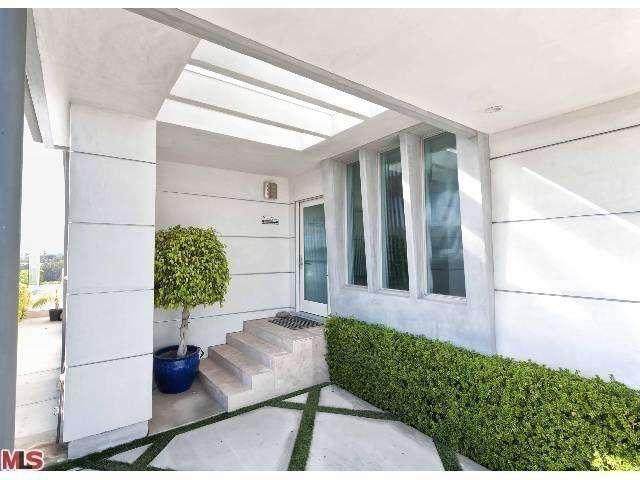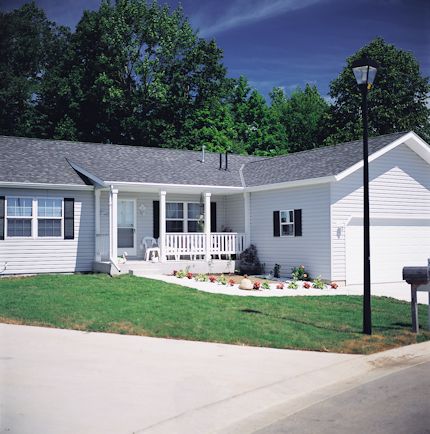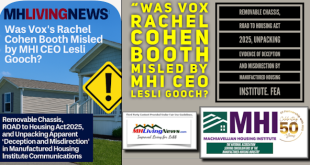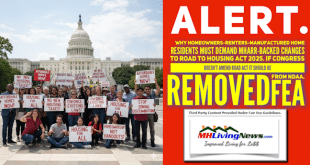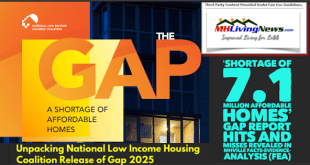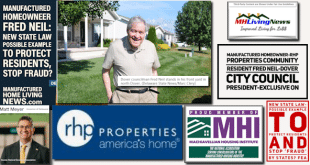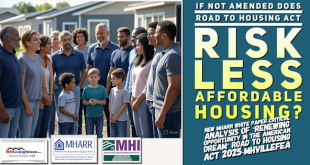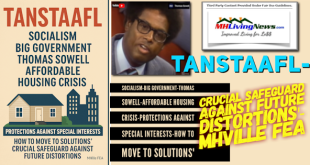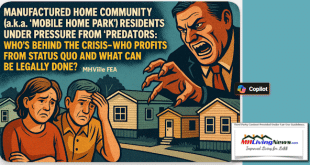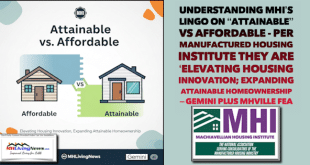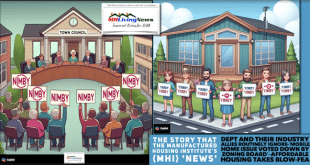“Pencil head, its not a trailer park.” So said Equity Lifestyle Properties (ELS) Chairman and real estate legend Sam Zell to a packed auditorium of manufactured housing professionals, as Zell described previous comments he’s made to potential investors. But “its not a trailer park” isn’t the impression you’d get about proper manufactured home terminology from reading “The Cold Hard Lessons of Mobile Home U” by Gary Rivlin wrote for the New York Times.
Some three weeks have gone by and reportedly over two million readers visited the Cold Hard Lessons article published by the NYTimes. While some in manufactured housing professional circles have decried the article as setting the industry’s image back ‘decades.’ Others think it may accelerate the process of bringing more new capital into a sector that was already expecting to see perhaps $1 billion dollars plus in new investments in 2014 for manufactured home community (MHC) purchases.
Canadian firm Tricon Capital (TCN) has stated they plan to spend up to $670 million in the U.S. for acquiring manufactured home “land lease” communities. TCN Chief Operating Officer (COO) Gary Berman said, “If you look at the U.S. population, it’s definitely growing, it’s definitely getting older, and it’s probably getting poorer. What single-family rental and manufactured housing do is they provide very affordable housing for people.” He says manufactured housing is a $400 billion business within the overall single-family U. S. market worth $2 trillion to $3 trillion.
Frank Rolfe, Dave Reynolds and Mobile Home U
Frank Rolfe is a partner with Dave Reynolds in what they’ve dubbed “Mobile Home University,” a periodic “boot camp” for potential investors featured in theTimes story by Rivlin. Comments Rolfe made on LinkedIn to industry detractors in that group suggest Rolfe’s sees them as jealous of his and Reynold’s success. Rolfe pointed out the apparent hypocrisy of his LinkedIn and blogging critics, who themselves used the terms ‘mobile home’ in some of their own properties.
But Times writer Rivlin himself states he is the main reason for the heavy use of the improper terminology found in the article.
“I just did a quick computer search of the 60 (!) pages of notes I took at Mobile Home U and found only a few references to “trailer” or “trailer parks” within quotes.” the article’s author, Gary Rivlin, said on the LinkedIn thread referenced above.
Rivlin continued, “It was my decision to use trailer/trailer park and mobile home/mobile home parks interchangeably. The reason? I asked around among my circle and “mobile homes” was conjuring up RV parks rather than the kind of places Rolfe and Reynolds own and I decided to use the words interchangeably. It’s “Trailer Park Boys,” not “Mobile Home Park Boys,” because that’s how the wider world–like it or not–describes your properties.”
But many industry pros believe that the fact some say or do something wrong is no excuse for the mainstream media to make the same mistake.
Should Rivlin have used such terminology, just based upon what some of his friends and acquaintances said? Doesn’t a writer for the New York Times need to live up the standards of “All the News that’s Fit to Print,” which motto has long appeared on the upper right side of the newspaper’s front page?
Other Manufactured Housing CEOs Sound Off

UMH’s president went on to explain the differences and price points for new entry level 3 bedroom 2 bath homes that start in the $40s. Landy also stressed the inherent value in both pre-HUD Code ‘mobile homes’ or what some in the media call ‘trailers,’ versus the modern, appealing and affordable manufactured homes offered by communities such as UMH and by retailers from coast-to-coast.
Other manufactured housing industry professionals expressed similar perspectives.
“Today’s manufactured home provides energy efficiency, quality, attainable homes for individuals from all socio-economic groups and walks of 
Among the numerous missed-the-mark statements in Rivlin’s article was the following: “A mobile-home park feels more like an army base than a neighborhood.”
Really?
National award winning community developer Rand and others would beg to differ, as the photo of a residential style community he and his partners created over a decade ago proves.
(Photo courtesy of the Great Value Homes)
Rand explained that the homes could be even more “residential” today, and even less costly then when he developed properties over a decade ago, like the ones shown in the photo above. This is possible, Rand explained, thanks to advances that continue to occur in the manufactured home industry.
Interior view of a two level manufactured home in a Chicago suburb,
which sold for about half the cost of similar 2 story conventional houses nearby.

In fact, MHARR’s Chairman, John Bostick, lives in a factory built home himself. This is the second factory produced home the Bostick’s have owned, which he and his family recently had built for their primary residence.
Betty’s Russell – Saw move star – $1,999,999 manufactured home’s entry.
Indeed, as ManufacturedHomeLivingNews.com has previously reported, millionaires and screen stars living near Zuma Beach in posh Malibu, CA are among those who’ve chosen the manufactured home lifestyle.
Saw movie series actress Betsy Russell’s home drew national attention when it listed for a dollar shy of 2 million dollars last summer. Perhaps marble flooring and other custom features – along with a spectacular view – were among the reasons for the price tag?
MHI Chairman Sounds Off on the hot controversy

MHI’s Chairman elaborated.
“No mobile homes have been built in the U.S. since June 15, 1976. Would you know that from listening to local or national news? Would you know that modern manufactured homes are more energy efficient, safer against fire or have less maintenance than a similar footprint for a conventional home?”
“These are the facts from government, insurance and university studies,” Smith stated. “And the U.S. Census Bureau reports the cost per square foot (for a manufactured home) is about half of conventional construction. When the media gets those facts and the terminology right, we’ll see more well earned respect for our homes, residents and communities.”
(Photo courtesy of Great Value Homes.)
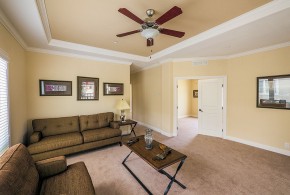
UMH’s Sam Landy echoed similar thoughts.
“We have other communities where no one would ever say the homes are trailers.” UMH’s president stated.
“It’s up to us as operators to properly market each community for what it is. In any case, UMH believes we provide the best housing value at the price point we are working to satisfy. “ Landy stated.
Did Rivlin Visit Factories to see Modern Manufactured Homes?
Rivlin should be commended for staying in a MH Community for a week, and seeing first hand the resident satisfaction that he found there. Quoting:
“But the most striking aspect of their business is how happy their tenants seem to be. “
Rivlin did not respond to additional follow up questions, but one might wonder, did he visit a modern manufactured home factory? If not, why not? If so, why did that fail to make his affordable housing report?
MHProNews recently did a video interview with Chet Murphree, one of 8 founders of publicly traded Deer Valley Homebuilders (DVLY), who were among a number of manufactured home producers who showcased over 80 homes at the 2014 Tunica (MS) Manufactured Housing industry trade show.
While the insights Murphree shared in this video interview were geared to industry professionals, they also go to the heart of the affordable quality living issue.
University Studies
Lisa Tyler, a doctoral candidate at Walden University. Ms. Tyler has owned, worked in the manufactured home industry and will do her 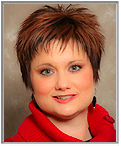
Ms. Tyler added, “As Chet (in the video shown) mentioned…Their profitable business model focuses on merging high quality with low cost to provide housing to consumers unable to afford traditional homes.”
Over a Billion in new Capital Entering MH Communities space
Frank Rolfe made it clear he and his partner invest money in improving the communities they buy. In fact, Rolfe suggests it’s precisely mismanaged MH Communities that offer a nice upside investment option, while also improving the lives of those living there.
Rolfe is far from alone in this thinking.
Publicly trade UMH is among a number of operations that buy locations that include those which have suffered from management or others issues, with an eye to turning them around.
In The Story of Colonial Heights on MHProNews, UMH manager Terri Lynn Prokorym outlined with photos and verbal explanations the dramatic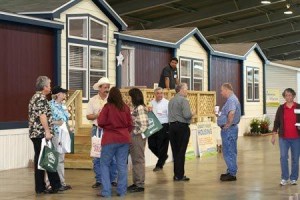
Just as ELS, Frank Rolfe, Nathan Smith’s SSK Communities, Rick Rand’s Great Value Homes have been expanding their portfolio of properties, UMH has more than doubled their holdings since 2008.
Such investments speak of the confidence these and other professionals have in the future of the factory built home industry and the land lease ‘real estate’ side of the community business.
In a soon-to-be-released interview with Clayton Homes founder and Clayton Bank Chairman, Jim Clayton, the manufactured housing industry legend spoke about a turn-around project in Texas his firm backed for Scott Roberts of Roberts Resorts.
Jim Clayton has said there are homes and locations for most every price point and potential home buyers in America, which cost less than their conventional housing alternatives.
Shouldn’t more of those facts have come across in Rivlin’s New York Times column?
In an era where affordable housing is a crisis in some areas, as a recent Harvard Study reports, one would think the mainstream media would spend more time showcasing this appealing American option of modern factory built homes.
The Improper Use of the “T Word” by the Mainstream Media Ought to be Taboo
Indeed, more positive media coverage and reports has been coming to manufactured housing. So why did Rivlin use the provocative “T word” in his article?
By way of analogy, some industry professionals believe that the T word is akin to an African American who may call a fellow black, ‘n-ger.’ But would the fact that some blacks use that term give license for a New York Times writer to run a story that repeatedly used such a racially charged term like the ‘N Word’ in it?
Not likely.
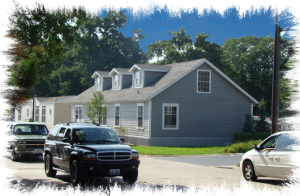
Further, ‘trailer’ is the name for something you pull behind a car or truck. You can’t move a modern manufactured home without specialized equipment. Today’s manufactured homes are not designed for frequent moves, as say some towable RV are, which can be called a “travel trailer.”
As one retailer told MHLivingNews, “When was the last time you saw a two story “trailer,” built over a full or partial basement?”
When Deer Valley’s Chet Murphree says he has “heavy built homes,” that is a reality.
A modern single-section home may weigh 25 tons or more. Multi-sectionals can be 40 to 50 tons or more, prior to being permanently installed.
Nathan Smith concluded by saying, “Do a Google News search for “manufactured homes.” Then do ones for “mobile homes” and “trailer park.” The media uses those outdated terms ten to one (over the proper names). That’s the reality. Its hard to change the terminology used in the marketplace when customers are indoctrinated by the media to come to us to buy mobile homes.” ##
Additional information about those quoted and related links:
- A Cup of Coffee with…Nathan Smith
- A Cup of Coffee with…Sam Landy
- A Cup of Coffee with…Chet Murphree
- A Cup of Coffee with…Rick Rand
- Sam Zell, “You’ve Got to Have Confidence”
- Controversial New York Times Article on Mobile Homes and Trailer Parks lands Frank Rolfe, Dave Reynolds and Mobile Home University in the Spotlight
- Changing Impressions about Manufactured Homes in about 15 Minutes (by Lisa Tyler, Walden University)
- Return to the RV/MH Hall of Fame to see new Manufactured Home on Display in Elkhart, IN
- Upcoming Eastern Ohio public home show.

 manufacturedhomelivingnews.com Manufactured Home Living News
manufacturedhomelivingnews.com Manufactured Home Living News



